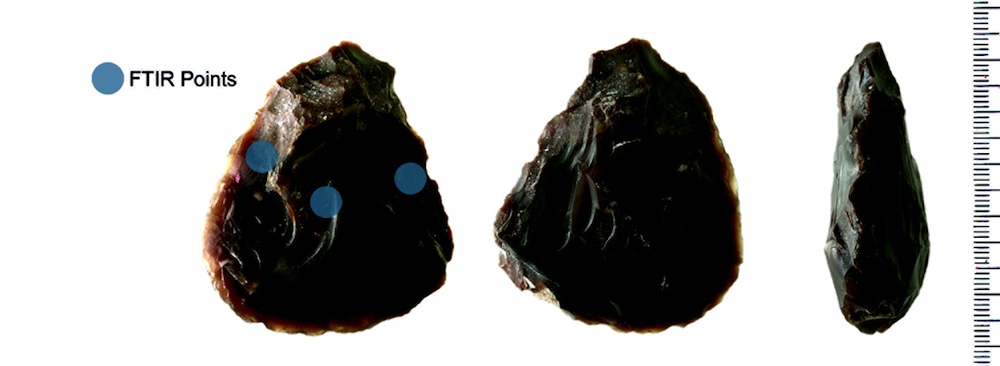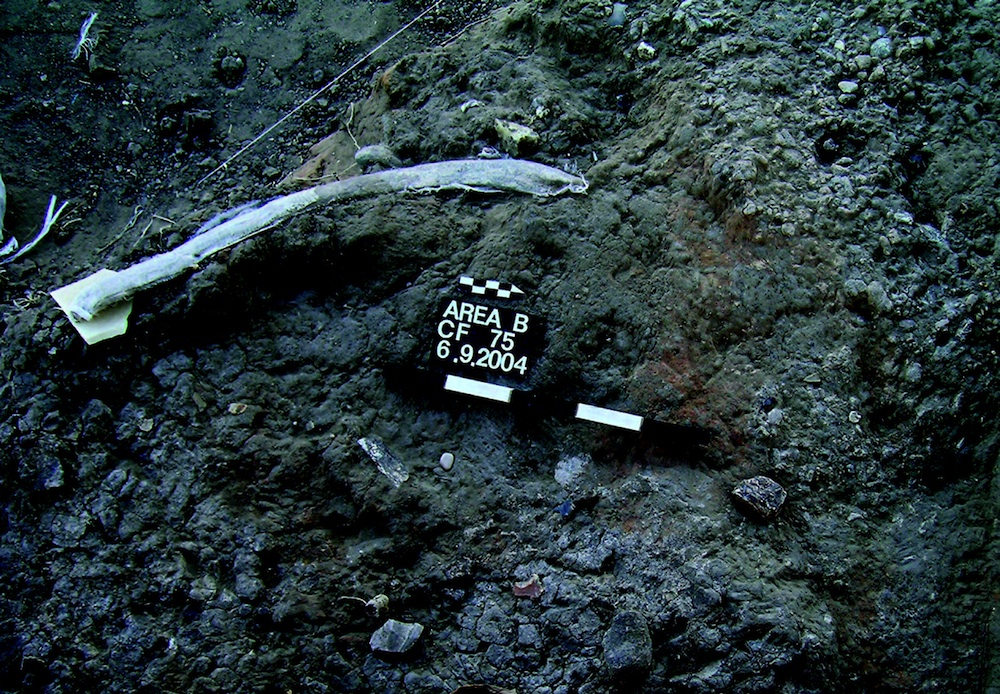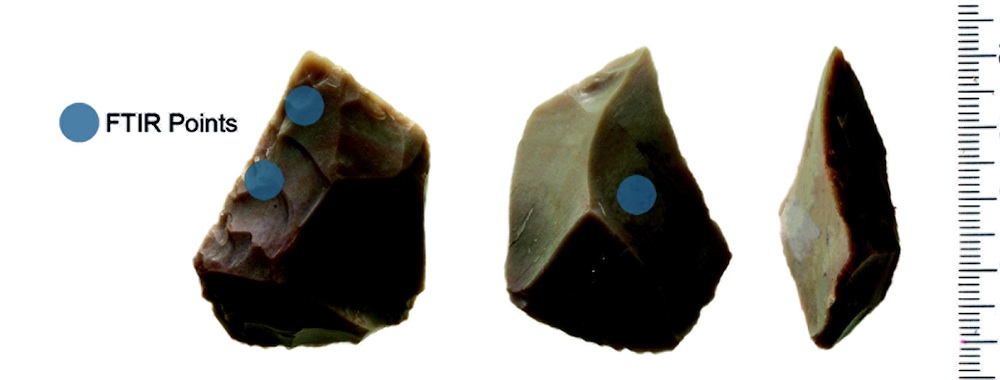
Stone tools that are half a million years old have been unearthed in Israel — and they still have traces of elephant fat clinging to them.
The new discovery shows that ancient humans used tools to process and butcher large animals, researchers say.
Though anthropologists had strongly suspected that early humans used tools to break down a carcass for its muscle, fat and marrow, "there was no smoking gun to show that the stone tools were, indeed, used for these kinds of tasks," said study co-author Ran Barkai, a professor of archaeology at Tel Aviv University in Israel. [In Photos: Tracing the Invention of Ancient Stone Toolmaking]
Ancient toolmaking
Between 1.8 million and 1.5 million years ago, early humans underwent two dramatic changes. First, the brains of Homo erectus got much bigger. Then, soon after, the ancient hominins stopped using a toolmaking method in which they'd bash hard rocks against other stones that could form an edge. Instead, these early humans began to use a more sophisticated toolmaking method known as Acheulean technology, in which the two faces of hand axes or scrapers are flaked off to form a blade, archaeological evidence shows.
Many scientists say these two developments are linked; the greater caloric needs of brainy humans would have required them to hunt or scavenge animals, and then butcher them to get at their meat and fat — and that required more advanced toolmaking technology, scientists have hypothesized.
Early humans used Acheulean technology of roughly the same size and shape for more than a million years, and very similar-looking tools have been found throughout the world. Archaeologists often find the tools at sites alongside animal bones, such as mammoth and elephant bones discovered at Paleolithic sites in the Levant in southwestern Asia, with cut marks and signs of breakage to extract marrow. But in these instances, the evidence that the humans used the tools to butcher animals was still circumstantial.
Sign up for the Live Science daily newsletter now
Get the world’s most fascinating discoveries delivered straight to your inbox.
Well-preserved site
In 2004, Barkai and his colleagues were excavating a quarry in Revadim, Israel, that held tens of thousands of well-preserved flint tools and thousands of animal bones from species such as wild aurochs, goats, gazelles and deer. But the site also contained bones from the straight-tusked elephant, a now-extinct pachyderm similar to the modern-day Asian elephant. The newest remains at the site were at least 300,000 to 500,000 years old.

In one spot, the team discovered three small hand axes and scrapers not far from a neatly cut elephant tusk. A chemical analysis of a mysterious residue on the hand axes revealed it was fat from a straight-tusked elephant.
The team also analyzed the wear on the surfaces of the tools, and even created replicas of the blades, to determine how they would have been used. Based on those recreations, the team determined that the hand ax made an excellent multipurpose tool that would have been good for cutting bones, sinew and hide. The scraper, with its slimmer and more fragile blade, was ideal for separating the fur, fat and muscle, they found.

Perfect tools
The new discovery supports the notion that tool development was a key factor in humans' ability to eat more meat at this point in human history.
"In order to be able to use animal resources, they needed to have tools in order to cut and butcher," Barkai told Live Science.
The results may also help to explain why tools didn't change for such a long period: They didn't need to, Barkai said.
"These tools enabled them to survive and thrive for over 1 million years," Barkai said. "They fit the needs of these hominins."
The hand ax was described Wednesday (March 18) in the journal PLOS ONE.
Follow Tia Ghose on Twitterand Google+. Follow Live Science @livescience, Facebook & Google+. Originally published on Live Science.

Tia is the managing editor and was previously a senior writer for Live Science. Her work has appeared in Scientific American, Wired.com and other outlets. She holds a master's degree in bioengineering from the University of Washington, a graduate certificate in science writing from UC Santa Cruz and a bachelor's degree in mechanical engineering from the University of Texas at Austin. Tia was part of a team at the Milwaukee Journal Sentinel that published the Empty Cradles series on preterm births, which won multiple awards, including the 2012 Casey Medal for Meritorious Journalism.










